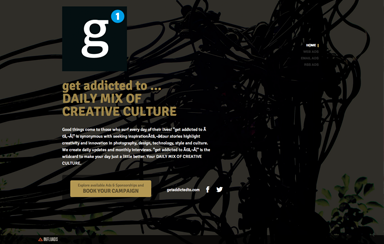The world of advertising is constantly evolving, with businesses needing to adapt to new technologies, platforms, and consumer behaviors to stay ahead. Traditional marketing tactics no longer suffice in an era where digital engagement, personalization, and data-driven strategies dominate. Companies that embrace innovation in their advertising approach not only reach wider audiences but also build stronger brand recognition and customer loyalty.
Integrating innovative advertising strategies can improve campaign effectiveness, enhance engagement, and boost conversion rates. Whether leveraging artificial intelligence, interactive content, or influencer marketing, businesses that adapt to changing trends can create impactful campaigns that resonate with modern consumers.

Leveraging Data and AI for Smarter Advertising
Data plays a crucial role in shaping advertising strategies. Artificial intelligence (AI) and machine learning allow businesses to analyze consumer behavior, predict trends, and automate marketing processes. These innovations help brands tailor their messaging, ensuring that advertisements reach the right audience at the right time. The professionals from Savage Global Marketing state that AI-driven tools, such as predictive analytics and chatbots, enhance customer interactions and improve campaign targeting. AI can optimize ad placement by analyzing user engagement patterns, ensuring businesses invest in the most effective platforms. Additionally, dynamic ads powered by AI adjust in real-time based on user preferences, creating a more personalized experience.
By integrating AI and data analytics into advertising strategies, businesses can make informed decisions, reduce wasted ad spend, and maximize campaign performance.
Incorporating Interactive and Immersive Experiences
Consumers today expect more than static advertisements; they want engaging and interactive experiences. Incorporating immersive technologies such as augmented reality (AR) and virtual reality (VR) into advertising campaigns can capture attention and drive customer engagement.
Brands are now using AR filters, virtual product try-ons, and interactive ads to create memorable consumer interactions. These experiences allow potential customers to visualize products in their real environment before making a purchase decision, increasing conversion rates and reducing return rates.
Gamification is another interactive strategy that encourages users to engage with branded content. Companies that integrate reward-based campaigns, quizzes, or interactive storytelling into their advertising gain higher audience participation and retention.
Enhancing Personalization and Customer Targeting
Personalization is a game-changer in advertising, with consumers responding better to messages tailored to their interests and behaviors. Businesses that leverage customer data to deliver personalized ad experiences build stronger connections with their audience.
Email marketing campaigns, targeted social media ads, and personalized product recommendations based on browsing history all enhance consumer engagement. Programmatic advertising, which uses automated systems to deliver highly targeted ads, further refines audience segmentation and improves ad performance.
A customer-centric advertising approach ensures that content resonates with individuals on a deeper level, leading to increased brand loyalty and higher conversion rates.
Utilizing Influencer Marketing for Authentic Reach
Influencer marketing has emerged as one of the most effective ways to gain credibility and expand reach. Consumers trust recommendations from individuals they follow more than traditional advertisements, making influencer partnerships valuable for brand awareness.
Micro-influencers, in particular, offer high engagement rates within niche markets. Businesses that collaborate with influencers relevant to their industry can effectively tap into targeted audiences with authentic messaging.
Brands should focus on building long-term relationships with influencers rather than one-time promotional deals. Consistent collaborations result in stronger audience trust and better campaign outcomes.
Optimizing for Voice Search and Conversational Advertising
With the rise of smart speakers and voice assistants, voice search is changing how consumers interact with brands. Businesses must optimize their advertising approach to align with voice search trends, ensuring their content is discoverable in spoken queries.
Conversational advertising, powered by AI chatbots and voice-responsive ads, enables real-time interactions with consumers. These technologies allow brands to engage with potential customers in a natural and intuitive manner, improving user experience and increasing brand visibility.
Ensuring that website content, ad copy, and search engine optimization (SEO) strategies accommodate voice-based queries helps businesses stay ahead in the evolving digital landscape.
Exploring Emerging Advertising Platforms
While traditional platforms such as Google Ads and Facebook remain effective, new advertising platforms are gaining traction among businesses looking to reach specific audiences. Short-form video platforms like TikTok, live-streaming services, and emerging social networks offer fresh opportunities for brands to connect with consumers.
Brands that experiment with innovative ad formats, such as shoppable videos or live product demonstrations, can capture audience attention in unique ways. Exploring lesser-known advertising channels provides a competitive advantage, allowing businesses to reach audiences that may be overlooked by competitors.

To remain competitive, businesses must continuously integrate new technologies and approaches into their advertising strategies. Leveraging AI, interactive content, personalization, influencer collaborations, and emerging platforms ensures that marketing campaigns stay relevant and effective.
Innovation in advertising goes beyond simply keeping up with trends—it requires a commitment to understanding consumer behavior, optimizing engagement, and delivering meaningful brand experiences. Companies that embrace these changes will create stronger connections with their audience, ultimately driving growth and long-term success.

Founder Dinis Guarda
IntelligentHQ Your New Business Network.
IntelligentHQ is a Business network and an expert source for finance, capital markets and intelligence for thousands of global business professionals, startups, and companies.
We exist at the point of intersection between technology, social media, finance and innovation.
IntelligentHQ leverages innovation and scale of social digital technology, analytics, news, and distribution to create an unparalleled, full digital medium and social business networks spectrum.
IntelligentHQ is working hard, to become a trusted, and indispensable source of business news and analytics, within financial services and its associated supply chains and ecosystems





























